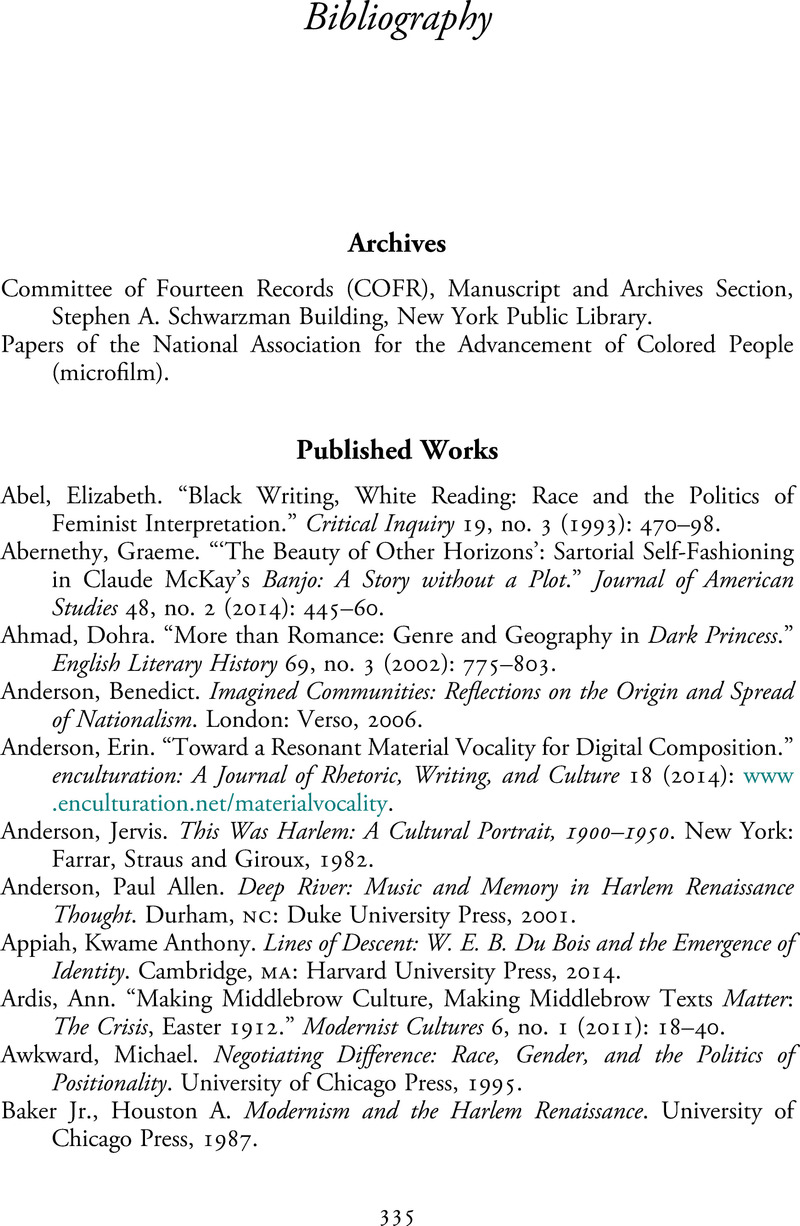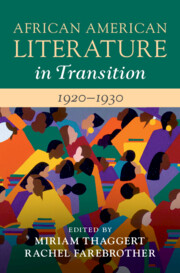Book contents
- African American Literature in Transition, 1920–1930
- African American Literature in Transition
- African American Literature in Transition, 1920–1930
- Copyright page
- Contents
- Illustrations
- Contributors
- Acknowledgments
- Chronology of Historical Events, People, and Publications, 1920–1930
- Preface
- Introduction
- Part I Habitus, Sound, Fashion
- Part II Space
- Part III Uplift Renewed
- Part IV Serial Reading
- Bibliography
- Index
- References
Bibliography
Published online by Cambridge University Press: 17 March 2022
- African American Literature in Transition, 1920–1930
- African American Literature in Transition
- African American Literature in Transition, 1920–1930
- Copyright page
- Contents
- Illustrations
- Contributors
- Acknowledgments
- Chronology of Historical Events, People, and Publications, 1920–1930
- Preface
- Introduction
- Part I Habitus, Sound, Fashion
- Part II Space
- Part III Uplift Renewed
- Part IV Serial Reading
- Bibliography
- Index
- References
Summary

- Type
- Chapter
- Information
- African American Literature in Transition, 1920–1930 , pp. 335 - 360Publisher: Cambridge University PressPrint publication year: 2022



